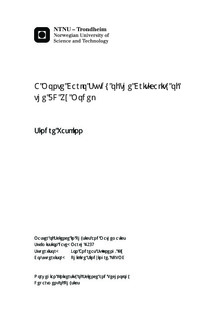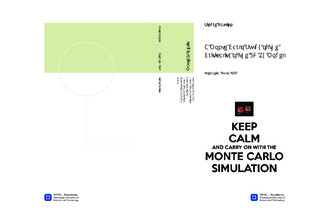| dc.description.abstract | In this master thesis the criticality of the 3D XY model with cubic anisotropy has been examined by the means of Monte Carlo simulation. The 3D XY model is a special case of the $O(n)$ spin-vector model which describe numerous phenomena's. Here, $n$ is the number of vector dimensions and for the XY model $n=2$. The $O(n)$-model is invariant for global rotations. This means that it is arbitrary which direction in the symmetry breaking occurs. In real system one should always expect perturbations from a perfect system, here it is done by adding a cubic anisotropy (order $p=4$) then the symmetry of the Hamiltonian is lowered and it will be advantageous for the spins to be ordered in directions $90^o$ apart. This symmetry is called $C_{4}$, which is a part of the cyclic group, and it restricts the symmetry breaking to one of these four directions.
The criticality of this model is when the spins suddenly align as the temperature is lowered to a critical temperature. Sufficiently close to the critical temperature quantities like the magnetization, which is the sum of spins, will show a power law growth characterised by critical exponents specified by the class of universality of the transition. The critical exponents can be obtained by finite-size scaling. By applying renormalization theory on the critical region one can show that some of parameters in the Hamiltonian are: relevant and effect the scaling, irrelevant and does not effect the scaling and dangerously irrelevant meaning that they only affect some of the critical exponents. Previous Monte Carlo and renormalization calculus show that anisotropy which is relevant for $p<4$ becomes dangerously irrelevant for $p\geq4$. The question of interest is what kind of effect the dangerously irrelevant parameter in the Hamiltonian has on the scaling. This is interesting because the effect of dangerously irrelevant parameters is hardly studied and anisotropy arise in many crystal systems because of the lattice geometry.
The results are obtained by Monte Carlo simulations and the critical slowing down close to the phase transition is solved by the method of parallel tempering. This method was chosen because it is simple to implement in a parallel code.
The Binder cumulant for different quantities and the peak of the magnetic susceptibility was used support a critical temperature $T_c = 2.2019 \ \textnormal k$ for no field applied and no anisotropy. The known critical exponents for the no field and no anisotropy was used. The scaling made a good collapse, meaning that the right $T_c$ and the correct critical exponents where used. The scaling did not take into account a magnetic field and therefore a good collapse of curves where not obtained in this case. When the cubic anisotropy was added the critical exponent for the magnetic susceptibility and the cubic order parameter changed, while the other exponents where unchanged. This supports the view that cubic anisotropy is dangerously irrelevant for the 3D XY model. The scaling of the magnetic susceptibility showed a possible new kind of scaling, a scaling which is different on the two sides of the transition. Although a more accurate determination of the critical exponent in the ordered phase require more extensive simulations. It appears that this exponent is larger than the exponent in the disordered phase, where one recovered the isotropic exponent. The difference in the critical exponents has been predicted to increase with $p$ and an investigation of the hexagonal anisotropy $p=6$ has been started. | |

